If you’re lowkey getting tired of the usual popular destinations in Malaysia like Kuala Lumpur and Penang, I highly recommend checking out Kelantan. As a Malaysian, I have to admit that the east coast isn’t the most famous spot for many travellers unless they’re heading to the stunning islands in Terengganu.
Recently, I took a trip to Kelantan, and I have to say, this state has a unique charm that is truly worth exploring. In fact, I found it even more captivating than Kedah, largely due to its rich culture. Keep reading as I share my 3D2N Kelantan itinerary and travel tips!
Also read: 12 Dreamy Treehouses in Malaysia You Can Book on Airbnb
My Kelantan itinerary and travel tips
Day 1: City walking and exploring Kelantan’s enchanting beach
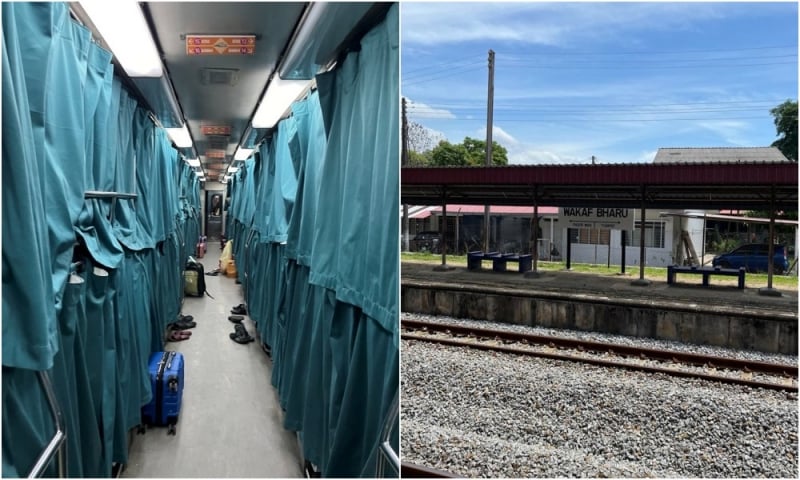
Several transportation options are available to reach Kelantan, including trains and flights. My friend and I opted for the sleeper train that departs from Gemas to Wakaf Bharu, and relied solely on Grab, Malaysia’s most common e-hailing service, for our travels within the state.
TripZilla tip: While using Grabcar is an option, I recommend renting a car to explore, as some places far from the city do not have many e-hailing drivers available.
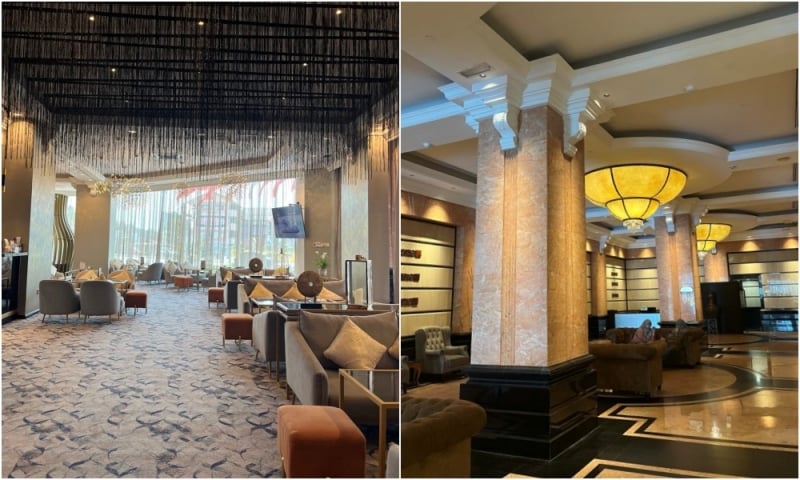
The car ride from Wakaf Bharu train station to Kota Bharu is just 12 minutes. After arriving in the city, my friend Linda and I made our way to our hotel, the Grand Renai Hotel, one of the few five-star hotels in Kelantan. We were fortunate to secure a discounted rate of RM200 (~S$61) per night (RM100 (~S$30.50) per person) during their promotional period!
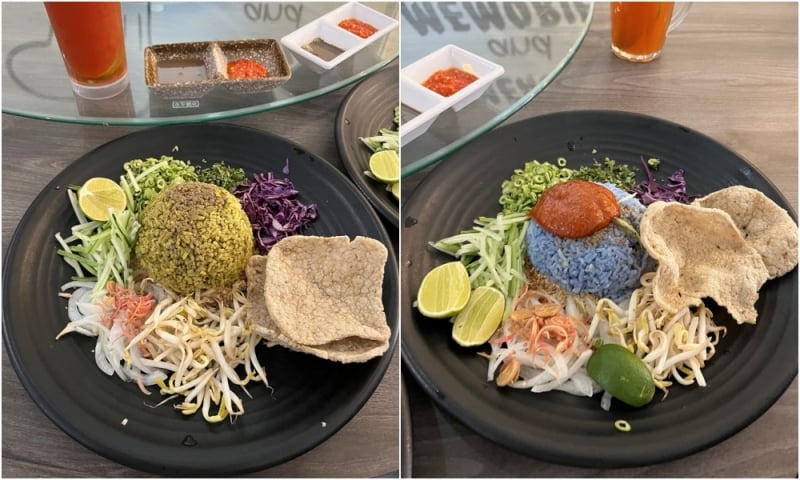
By the time we settled into the hotel, it was already around 2pm, so we headed to Popo Kitchen for a late lunch. This restaurant specialises in homemade Kelantanese cuisine and is quite popular among tourists.
We ordered nasi kerabu, a blue-coloured rice dish normally eaten with dried fish or fried chicken, crackers, and fresh vegetables; along with khao jam, a dish popular in both Kelantan and southern Thailand. It was my first time trying khao jam, and I found it quite similar to nasi kerabu — and just as delicious!
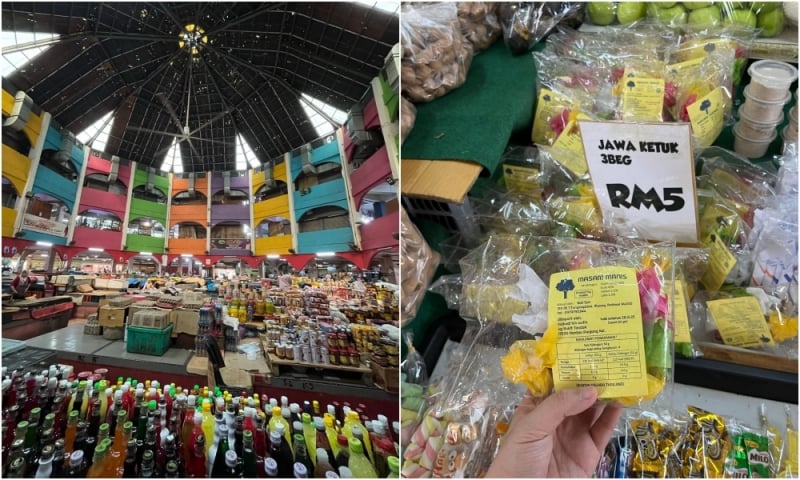
Then it was time to explore our first attraction of the day — Siti Khadijah Market. This traditional indoor market is known for its colourful interior design and vibrant stalls. Here, you’ll find an abundance of fresh produce, from fruits and vegetables to nostalgic childhood candies!
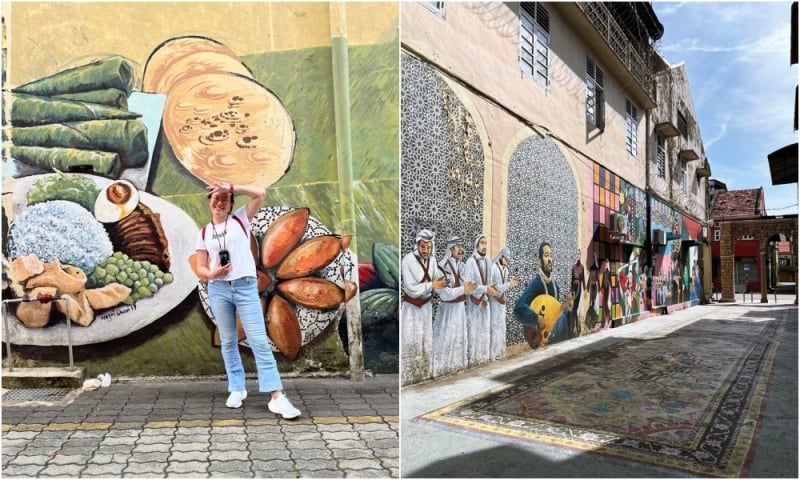
From Siti Khadijah Market, we walked about 10 minutes to our next stop — Street Art Kota Bharu. Art lovers or not, you’ll be amazed by the brimful of street murals here. These murals aren’t just beautiful — they’re rich with meaning.
TripZilla tip: Shops in Kelantan are generally closed on Fridays, so plan your visit for another day to experience the full liveliness of the local scene!
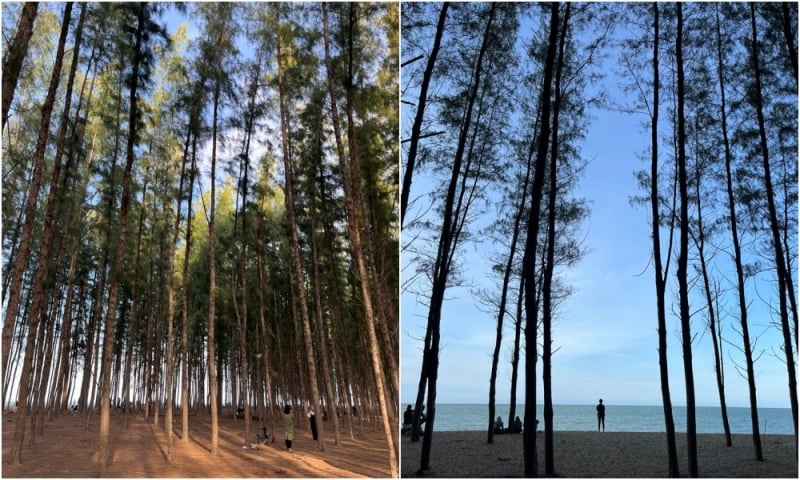
By the time we finished exploring, it was nearing evening. We used Grab to get to Pantai Senok, a stunning beach often dubbed the “Nami Island of Malaysia.” When I first heard of it resembling South Korea’s Nami Island, I had my doubts. But the moment I arrived at the beach, I was completely blown away!
Note: Grab drivers are scarce near the beach in the evening, so I recommend renting a car to drive to Pantai Senok, or visiting early in the morning to avoid transportation issues.
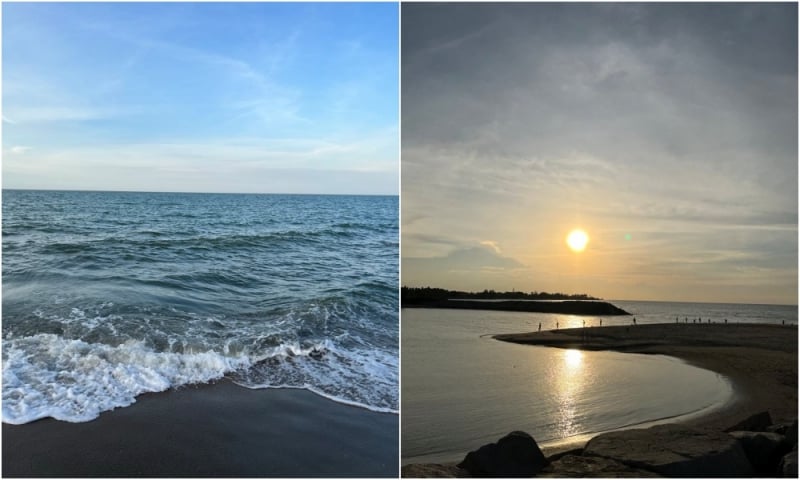
Filled with towering pine trees, the beach looks as if it’s out of a romantic movie! The beach boasts pristine white sands, while the sky and sea shimmer in a gorgeous light blue. Here, you’ll see locals flying kites, fishing, and simply enjoying a picnic by the shore. When visiting Kelantan, Pantai Senok is a hidden gem you absolutely shouldn’t miss!
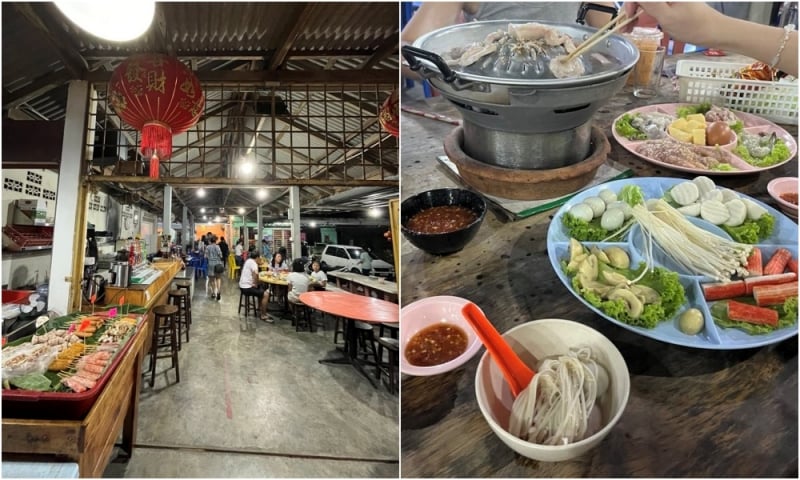
That night, we dined at Balai Steamboat, a beloved Thai restaurant in Bachok, following a recommendation from a friendly local. We savoured a delicious meal of mookata (Thai-style steamboat) before wrapping up the day!
Day 2: Immersing in Batik Art, Discovering the Craft of Wau, and a Quick Trip to Tumpat
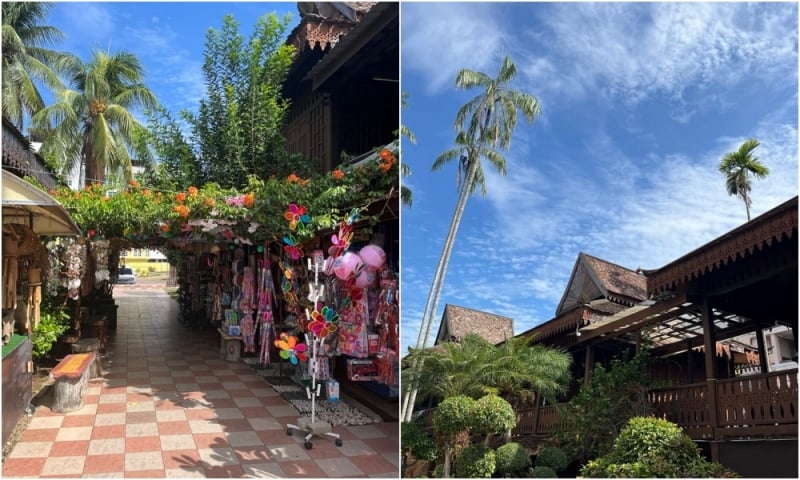
After enjoying breakfast at Renai Hotel, I kicked off Day 2 of my Kelantan itinerary with a visit to Kampung Kraftangan, also known as the Handicrafts Village in Kota Bharu. This charming spot offers the chance to create your custom-made souvenirs, try your hand at traditional Malaysian Batik painting, and explore the art and handicrafts museum, showcasing locally crafted embroidery, silverware, and more.
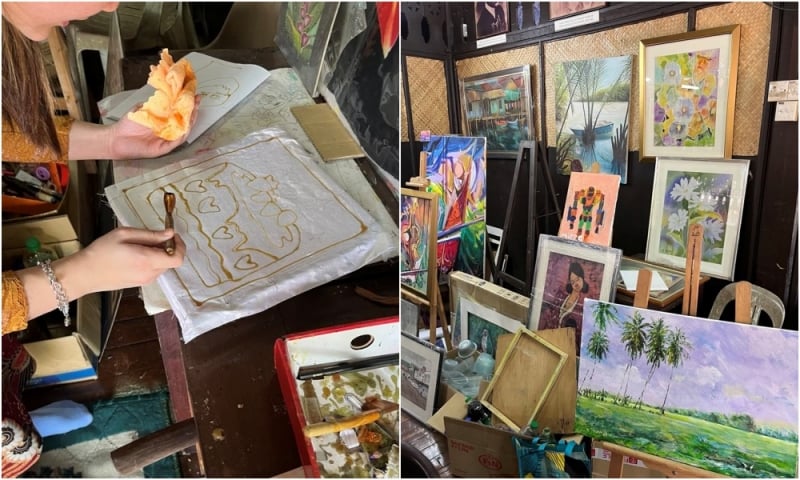
We indulged in a batik painting workshop. There, I also got to try out “canting”, which is a process where one uses a traditional pen-like tool with liquid hot wax to draw out intricate patterns on fabrics.
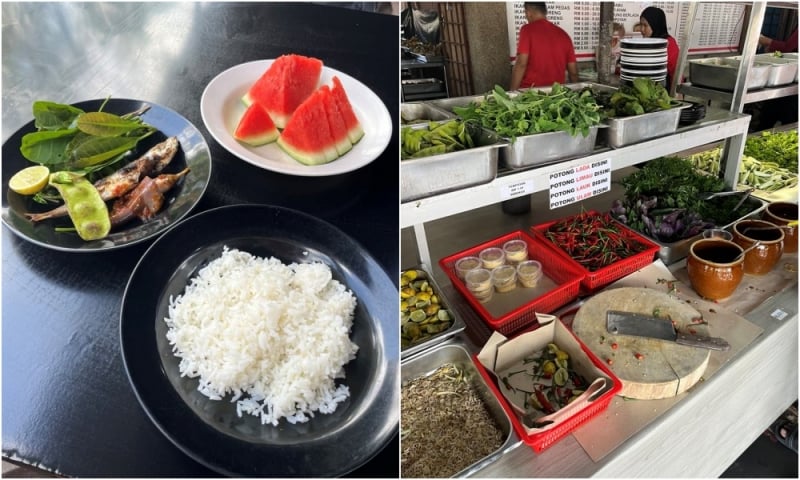
For lunch, we had local dishes at Nasi Ulam Cikgu, just steps away from the Handicrafts Village. We then proceeded to Galeri Wau Pak Sapie and Sons to see one of Malaysia’s national symbols — Wau Bulan up close!
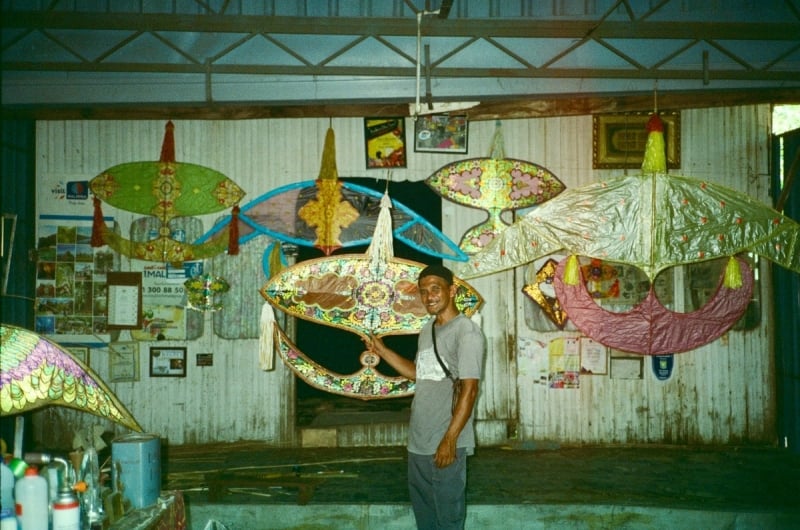
Galeri Wau Pak Sapie and Sons has been a cornerstone of Malaysia’s wau-making industry for over five decades. After the passing of Pak Sapie, his son took over the craft, continuing the family legacy. Today, Galeri Wau Pak Sapie and Sons is not only a place where traditional waus are crafted, but also a key attraction in Kelantan.
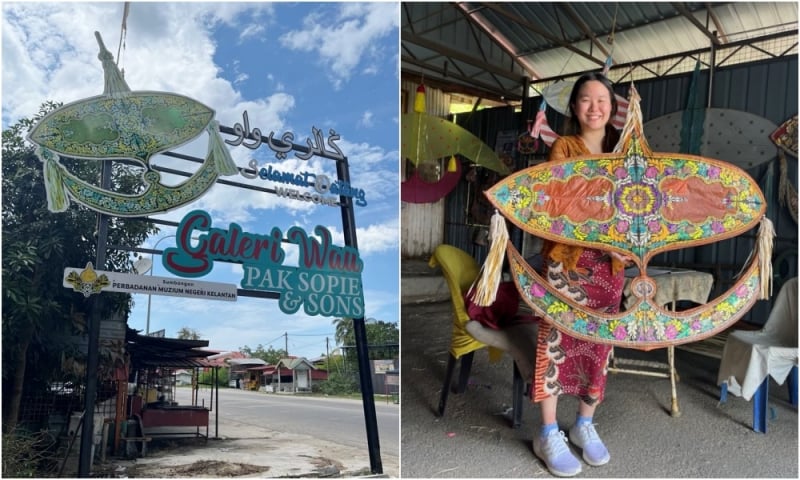
Here, visitors can learn about the cultural significance of these iconic kites, which are much more than just recreational toys. While most Malaysians are likely familiar with the Wau Bulan (as shown above), which originated in Kelantan, there are actually many other distinct types of wau across different states. For example, there’s the Wau Dodo Helang from Terengganu and the Wau Seri Bulan from Perak.
P.S. Did you know why the kite is called “Wau”? It’s named after the sound it makes when flying through the air!
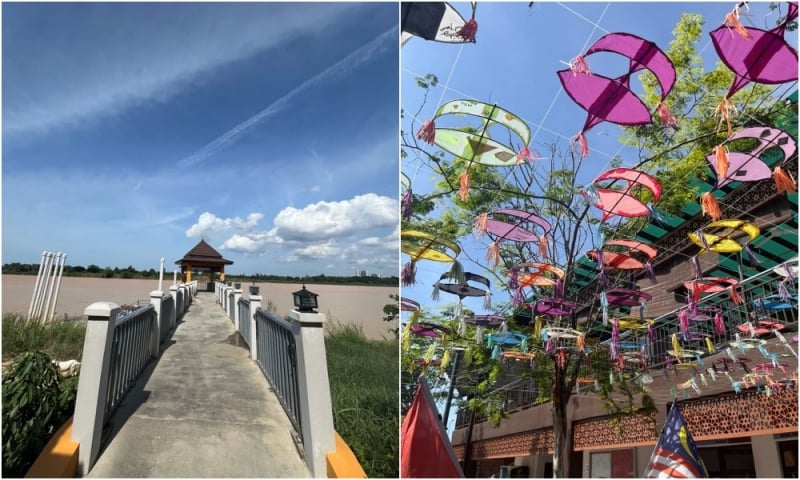
In the afternoon, we visited Masjid Kampung Laut, a local mosque in Tumpat surrounded by various shops within its premises. Apparently, other than the Handicraft Village, you can also find batik painting workshops here. The shops also sell other popular souvenirs, such as Wau Bulan decoration, and serunding, aka meat floss.
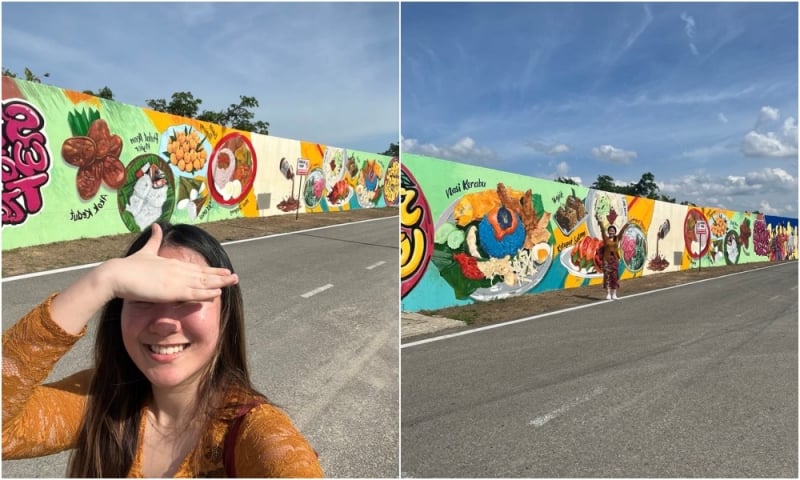
As we made our way from the mosque to the serunding shops, we stumbled upon a vibrant wall of street art — a perfect spot for taking photos!
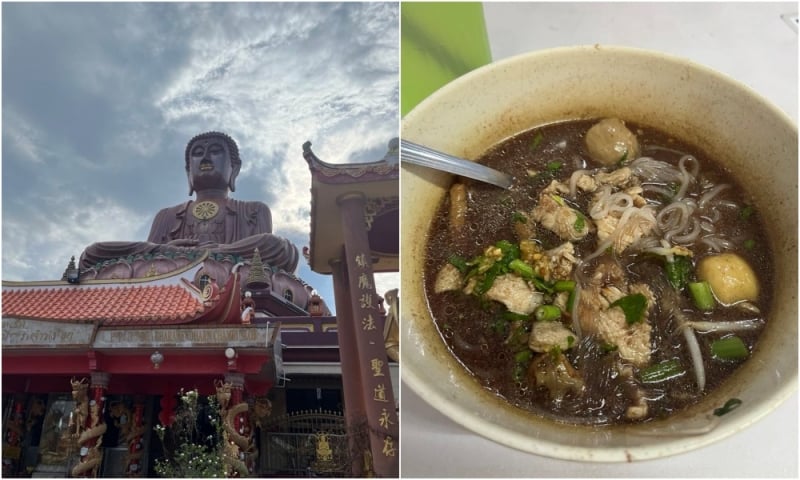
Our next stop was Wat Machimmaram, a Buddhist temple that houses the largest sitting Buddha statue in Malaysia. Right next to the temple is a Siamese school, where many Malaysian Siamese students attend.
Before heading back to Kota Bharu, I stopped for a bowl of pork boat noodles at a small restaurant just in front of the temple. It looked like an ordinary spot, but the noodles were surprisingly delicious — I was impressed!
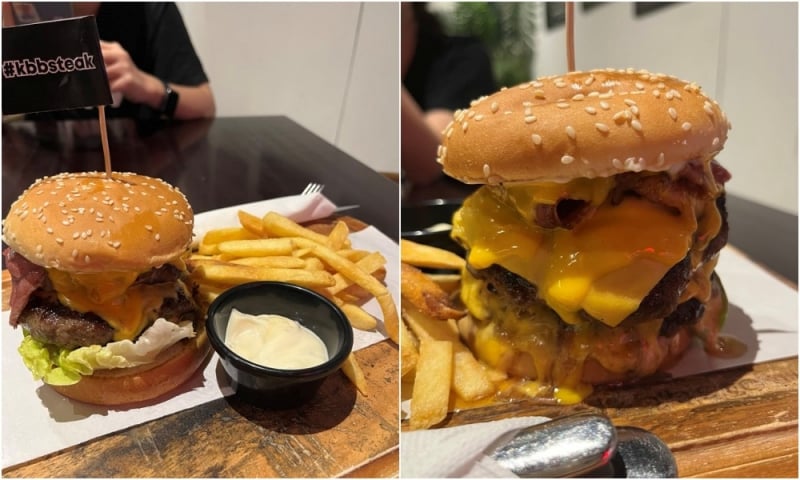
Later that night, we treated ourselves to dinner at KKB Kota Bharu, a trendy steakhouse known for its steaks and burgers. Feeling a bit fancy, we indulged in both chicken and beef burgers, and left stuffed!
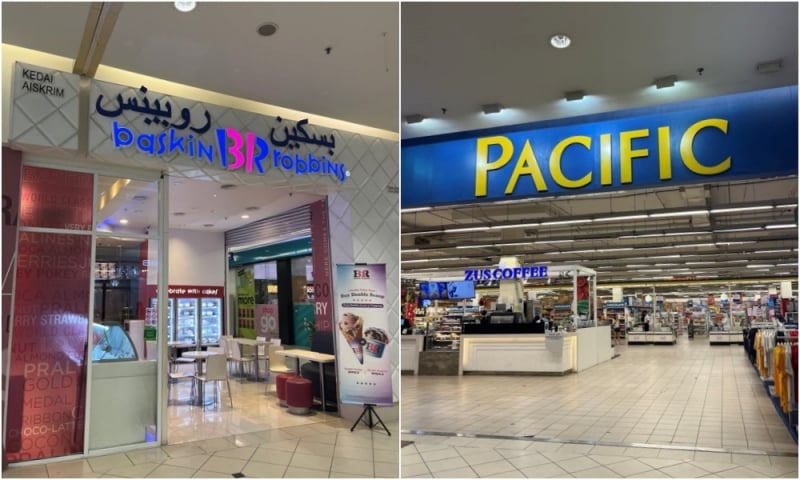
With some time to spare, we headed to KB Mall for a bit of shopping. That pretty much wrapped up our Day 2 in Kelantan.
P.S. Did I mention that nearly every shop in Kelantan has its name written in Jawi on the signboards? It’s not something you often see in other Malaysian states, so it was quite unique!
Day 3: Visiting the last match factory in Malaysia
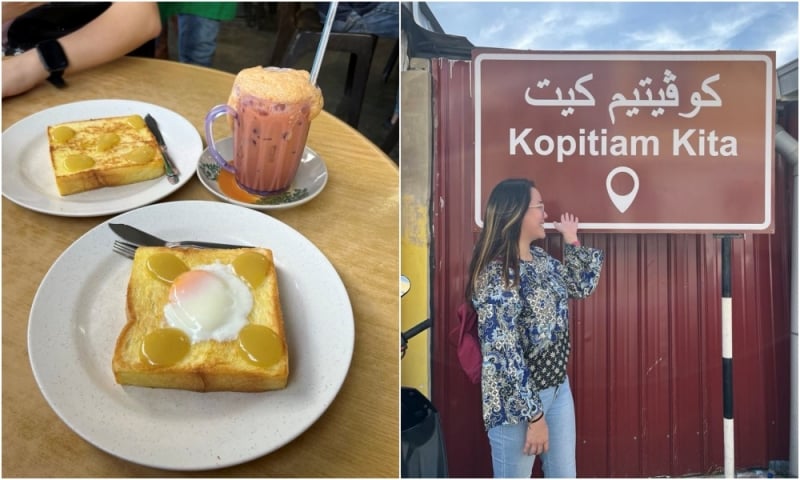
If you ask me about my absolute favourite meal in Kelantan, it has to be the breakfast we had at Kopitiam Kita. Recommended by my cousin who’s studying in Kota Bharu, this popular coffee shop is a local favourite and a must-visit for tourists as well!
We savoured Roti Titab, a Kelantan icon made of toasted bread topped with kaya jam and a soft-boiled egg. The perfect balance of sweet and savoury flavours made it very delicious, no wonder it’s become such a beloved dish over the years.
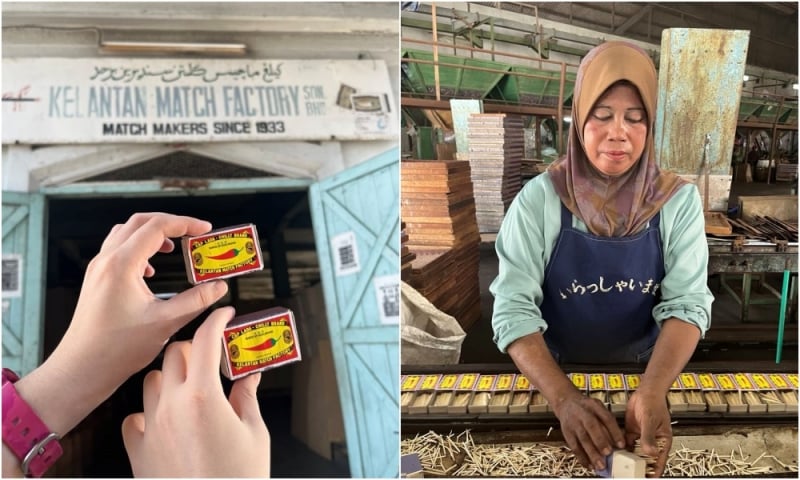
Though matches were once a common household item, the convenience of lighters has made them less prevalent today. Many younger generations nowadays have probably never even seen a matchbox. Fortunately, you can still catch a glimpse of how matches and matchboxes are made at the Kelantan Match Factory, the last surviving match factory in Malaysia.
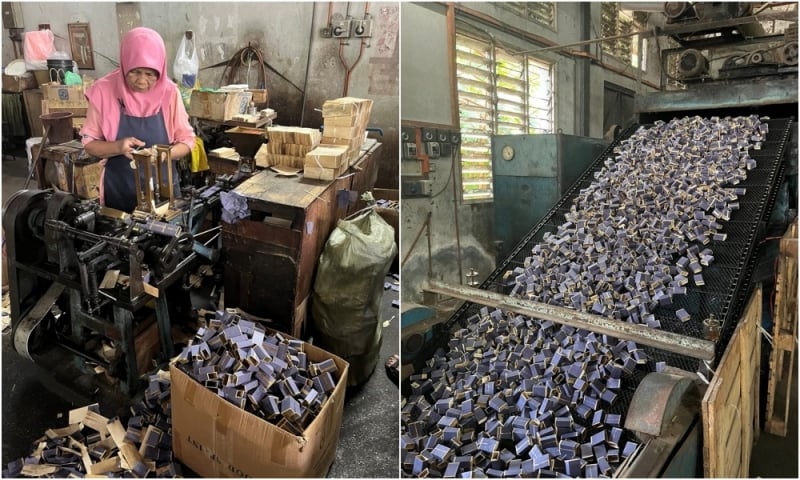
Watching the matchbox-making process up close was both special and fascinating. The staff were incredibly friendly and patient, answering all the questions we had. The best part is, that entry to the factory is completely free! I highly recommend anyone travelling to Kelantan to visit the match factory.
Note: Matches are classified as flammable items, so you may want to reconsider purchasing them if you’re travelling by plane.
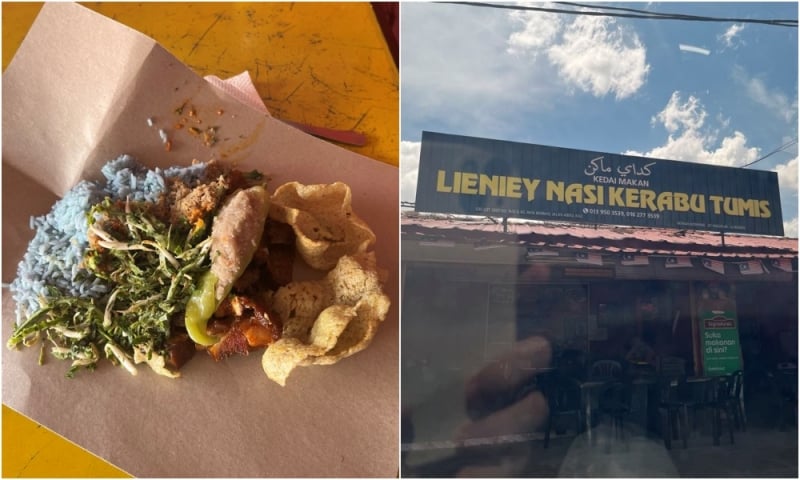
Before flying back, we had our last meal in Kelantan at Nasi Kerabu Lieney, a highly recommended spot according to numerous online reviews. While the Nasi Kerabu was flavourful, I found the coconut taste a bit too strong for my liking.
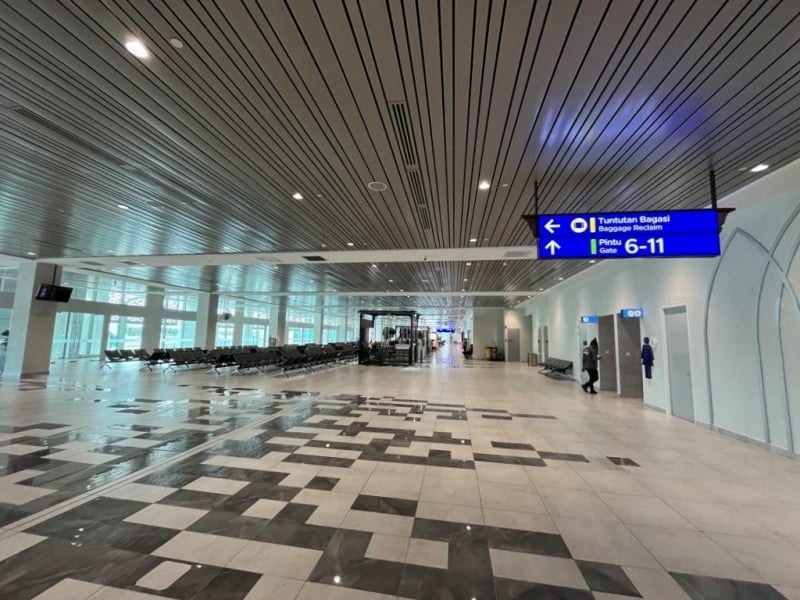
Since we travelled to Kelantan by train, it was our first time visiting the Kota Bharu Sultan Ismail Petra Airport for our departure. I learned that many tourists choose to fly directly to this airport to visit the nearby Pulau Perhentian islands. At the time of our visit, the airport had just undergone a renovation, it was clean, huge, and looked impressive!
Also read: Discover East Coast of Malaysia: Food of Kelantan and Terengganu that You Must Try
So that concludes my Kelantan itinerary. Though I only spent about three days here, Kelantan has quickly become one of my favourite destinations in Malaysia, truly living up to its nickname as the “Cradle of Malay Culture.” And the best part? This is just the beginning of the beauty that the East Coast of Malaysia has to offer!
All images are credited to Cecelia Chang.




